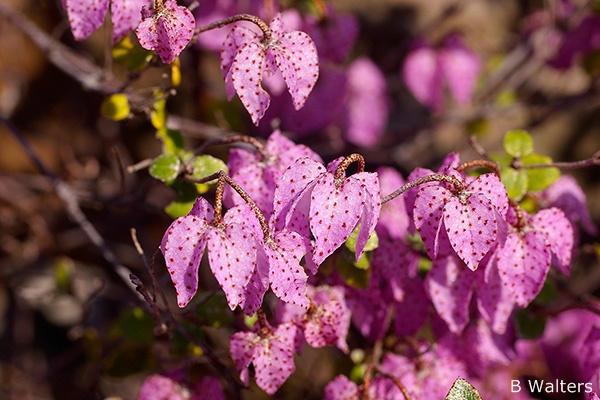General Description: Thomasia is a genus of about 32 species, all occurring in Western Australia with one (Thomasia petalocalyx) also extending to South Australia and Victoria. Thomasias are generally small to medium shrubs in which the calyx of the flower is more prominent than the petals. The genus is closely related to Guichenotia, Lasiopetalum and Lysiosepalum.
Thomasia pygmaea is a small, spreading shrub about 0.3 metres high by about 0.5 metres wide. The leaves a heart-shaped and about 10-15 mm in diameter. The pink to purple flowers are very conspicuous and unusual, having a ‘Chinese lantern’ shape. They occur in late winter and spring and and are covered in reddish-tan speckles, which also appear on the leaves and stems.
This species is not often seen in cultivation as it is not readily available. It is best suited to areas with a dry summer climate and can be difficult to maintain for long periods in districts with a humid summer. It requires well drained soils and will grow in full sun or partial shade. It is very suitable for growing in a container.
Propagation can be carried out from seed but seed is rarely available and germination can be unreliable. Cuttings are reported to be slow and difficult to strike.
* EPBC Act = Environment Protection and Biodiversity Conservation Act 1999;
ROTAP = Rare or Threatened Australian Plants (Briggs and Leigh, 1988)
For further information refer the Australian Plants at Risk page

Thomasia pygmaea
Photo: Brian Walters
 Australian Native Plants Society (Australia)
Australian Native Plants Society (Australia)